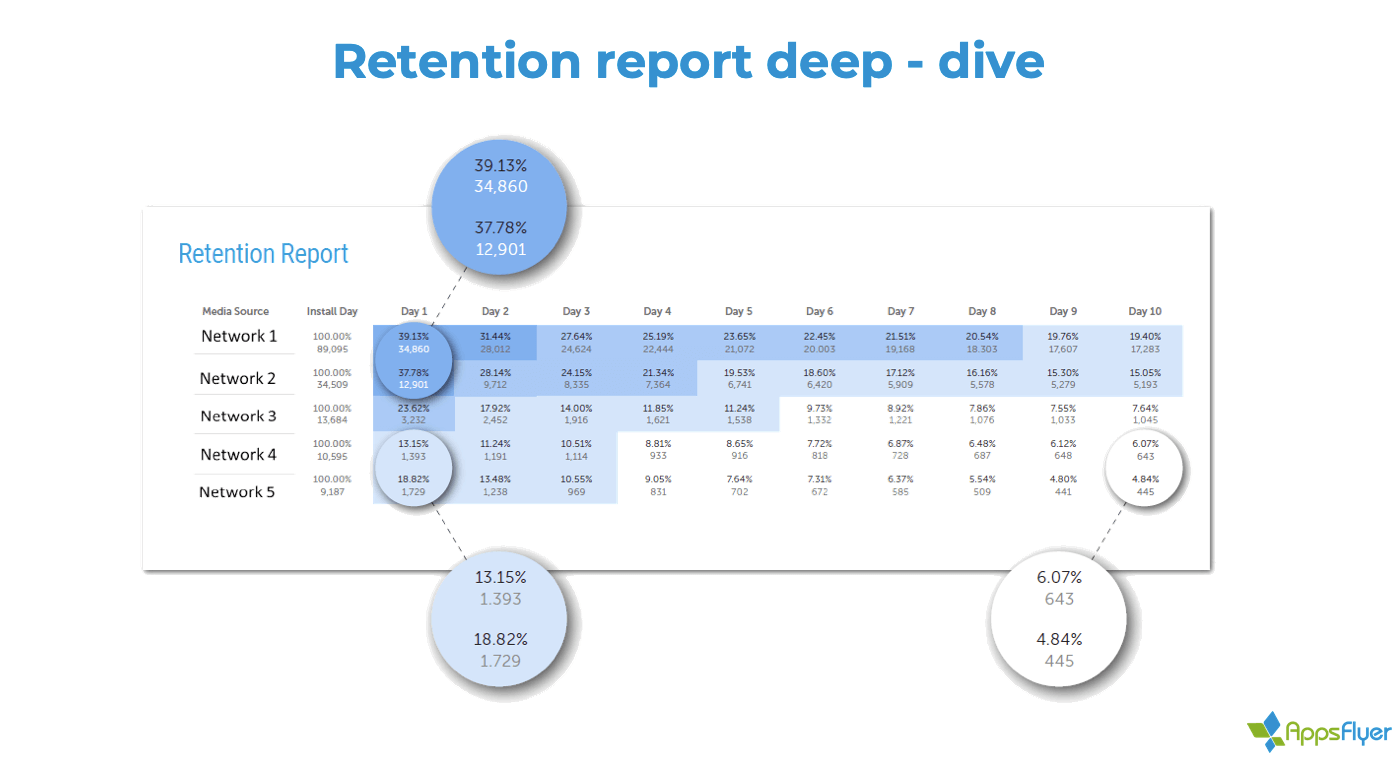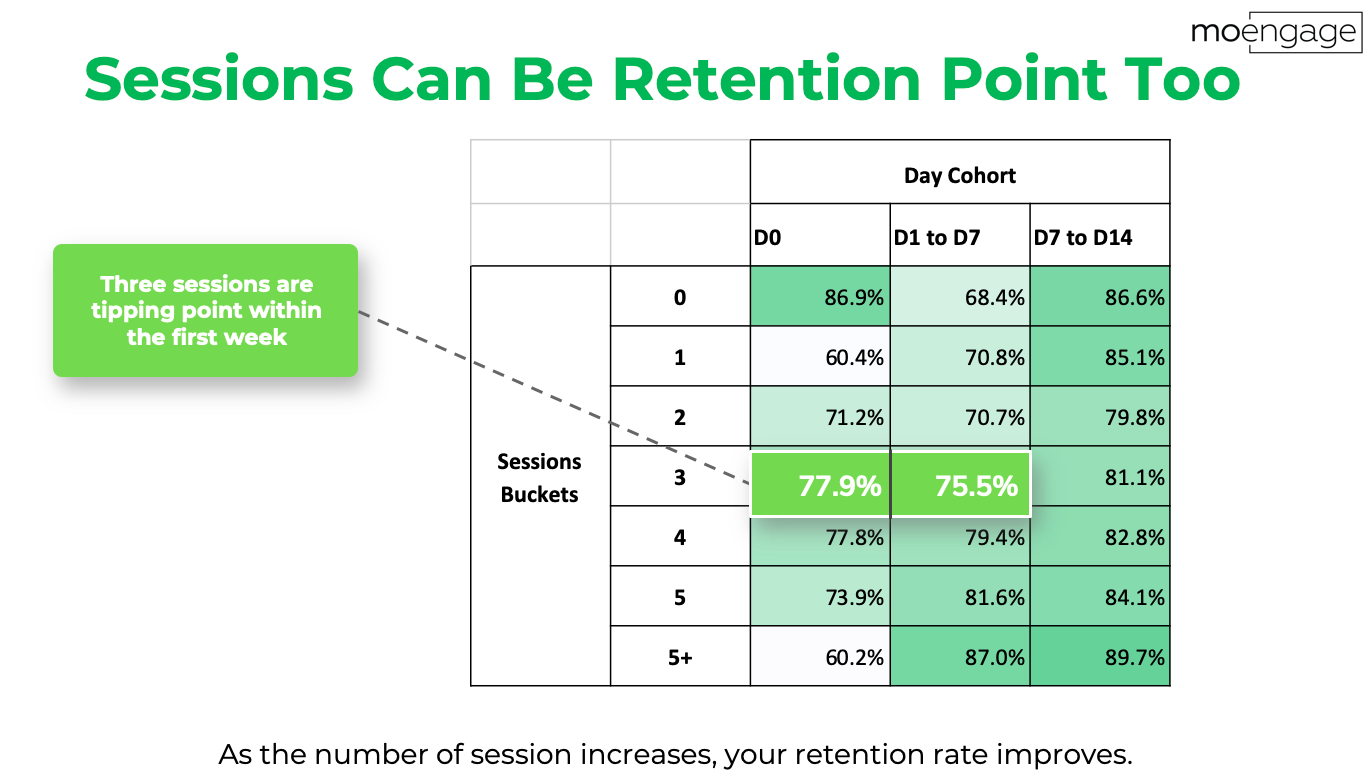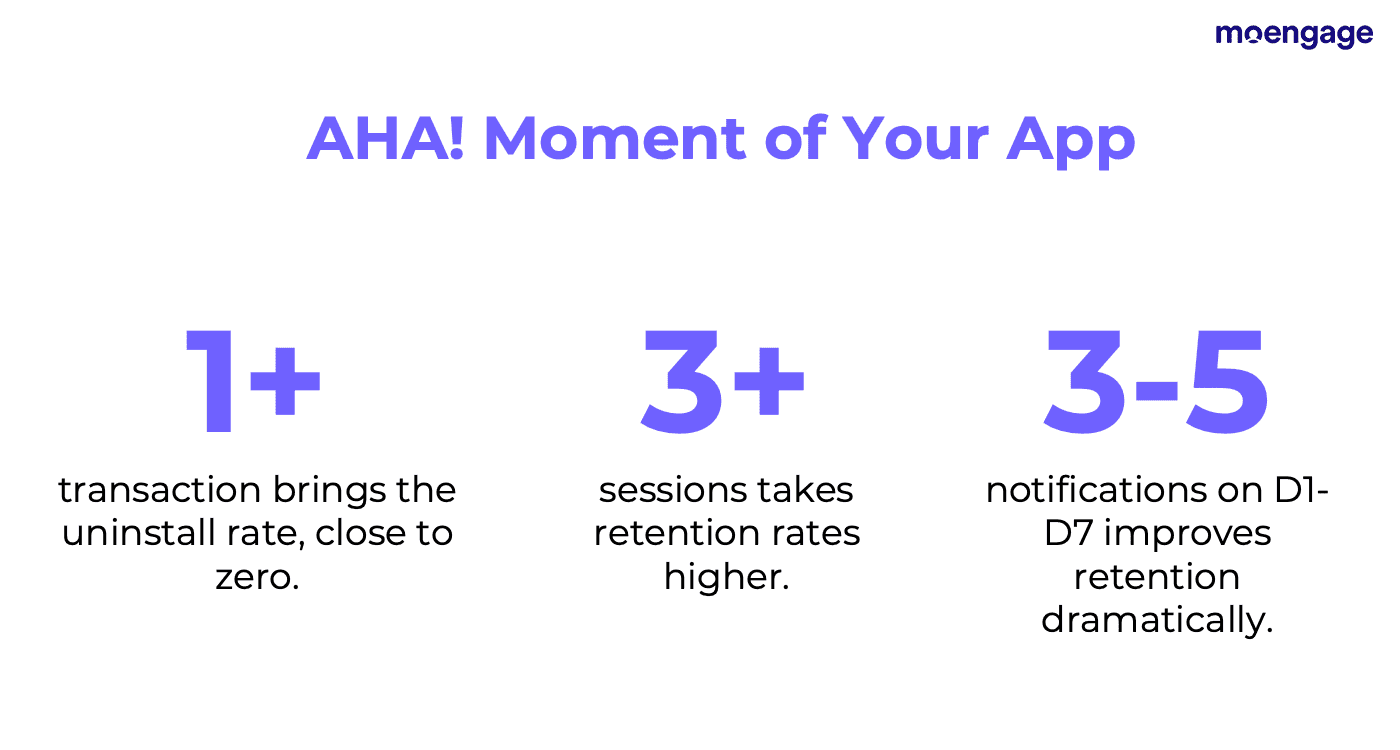Mobile App Retention: Benchmarks, Strategies & Best Practices [Infographics and Videos]
![Mobile App Retention: Benchmarks, Strategies & Best Practices [Infographics and Videos]](https://www.moengage.com/wp-content/uploads/2020/07/App-Retention_-Benchmarks-Strategies-and-Best-Practices-from-Experts_Blog_OG-1.jpg)
Reading Time: 6 minutes
If you’re a business that has yet to make the critical shift of focus from acquisition to retention, specifically app retention, this recent statistic by the Gartner Group might compel you to do so sooner.
80% of a company’s revenue will come from just 20% of the existing customers.
| Bonus Content
👉 The Complete Growth Strategy [Download Handbook] 👉 E-commerce App Retention Trends India [Download Ebook] |
The rising significance attached to customer retention strategies led by Himanshu Dilip Kulkarni, the Director of Sales, India at AppsFlyer, and Ashwin SL, Head of Marketing at MoEngage to explain the role of ROI-focused app retention strategies and practices in marketing through real-life data and examples.
Take a look at the webinar recording here:
We’ve summarized the key insights from the webinar in this article. If you’d like to scan through the tips and advice shared during the webinar, continue reading.
What Is Retention and Why It Is Important to Create Rich In-app Events
Brands need to go beyond the install and focus on the Life-Time Value of the right user. In order to identify the right campaign for the right user, an in-depth understanding of user actions/behavior on the app, through Rich In-App events helps this process immensely.
Rich In-App events enable you to collect data points of each user and segment them accordingly. For example; Attributes like —content type, content ID, price, currency, and customer user-id give you a deeper understanding of user behavior which allows for better segmentation and accurate targeting.
There are certain events that take place before the user reaches the checkout section or makes a purchase, these are called Critical Events, which are ROI/ROAS focused. Once you clearly define these events, you optimize your campaigns accordingly and subsequently boost retention and revenue.
*TIP* For timely and accurate optimization, club relevant events into one big calculated event. The calculation method or factors based on which multiple events are clubbed into a single one or need to be uniform throughout.
India has seen a 14% increase in average revenue per user retention in brands within 90-days, from 2018 to 2019 and this indicates successful data-driven optimization as far as retention is concerned.
Tools for Data Collection and Optimization
1. Retention Reports: Focus on sources that deliver the highest retention and drop sources that don’t, that does not mean you stop using that network that gives low numbers. Instead, try to understand what didn’t work — it could be the targeting, creatives, or communication. Regular analysis of the retention report is important to understand how to modify retention strategies based on drop-off behavior.

2. Cohort Deep-dive: Cohort is a group of users who show similar behavior and are grouped together to measure specific KPIs. Data at the highest level and widest scope do not give the most extensive overview. Brands must analyze data from a deeper perspective, by putting them in context.
*TIP* Flat Cohort retention curves indicate stickiness and that’s what you should be aiming for. Optimize the networks or partners that give you such curves.
3. Deeplink User Experience: Make sure your app users, wherever they are, land upon the right page, through deep-linking, while they search for what they want. Integration across platforms — app to app, mobile to the app, and email to the app – must be seamless, and hassle-free to be able to win users’ hearts.
4. Re-engage Existing Users: App-retargeting drives 63% revenue uplift, 50% higher than user acquisition alone. Use all channels possible to re-engage your app users whether email, push notifications, page-retargeting campaigns – go full swing! Nykaa is taken as the case study for app retention. They are the largest beauty brand in India and have achieved this feat in the short span of 3 years. They have an app and naturally, their focus was on user acquisition and retargeting users who uninstalled.
Appsflyer provides its enterprise clients with an ‘Audience Builder’ – a tool that allows marketers to slice and dice data into specific user segments. This is beneficial for teams that are looking to run retargeting campaigns. These dynamic segments have various touchpoints and user journeys mapped. This helped their user retention to shoot up by 55%. Due to the increase in engagement due to better targeting, their ROI also increased.
This was followed by details of the benefit of having an engaged audience Vs non-engaged. Data-driven marketing and the use of data at the right time to plan and execute campaigns can give exceptionally good results.
How to Improve App Retention
App Retention is the point in your app user’s journey where users are likely to stay back and continue using the app. This is closely tied to the set of actions that users perform that keeps them as an active contributing customer to your app.
Read on to know more on Mobile App Retention: In-depth Insights for E-commerce, Travel and Hospitality.
Slack has a retention point locked in at 2000 messages sent between a team, Facebook needs the user to gain 10 friends in 7 days and for Zynga, its if the user returns 1 day after sign up.
There is a need to understand the baseline retention rate for your app. This sets the context, gives you a number that you can work on and helps you communicate the need for added efforts, or sustaining your efforts and so on.
Taking this baseline, you need to hypothesize why users are dropping off, what actions are they taking or not, before they drop off, and so on.
The data that is used to illustrate and describe the app retention point is from the E-commerce report that we published.
This report covered 2.2 Mn users from SEA, one of the most matured markets in the world for mobile app-based E-commerce portals.
The size of cohorts is extremely important to be considered before making a decision on the app’s retention point. The numbers for various cohorts may be low or high and this should also determine how you make your decision.

Sessions Can Also Be a Retention Point
This point is illustrated with another graphic that shows how at 3 sessions during D0 and towards D1-D7 shows a healthy number.

After a thorough analysis of the data available, being pragmatic, and looking at the data from various different angles, (the E-commerce data that was considered for this study), you can find the AHA moment of the app.

To understand how this process works and to get a high ROI from it, a case study is used to illustrate it with one of the clients of MoEngage- Tokopedia.
How Tokopedia Increased Their Retention Rate by 60 percent by Using Moengage’s Cross Channel Messaging
Tokopedia is a unicorn technology company based in Jakarta, Indonesia. As of November 2018, the company is valued at $7 Billion, with around 80 million monthly active users.
The Challenge
Tokopedia was facing a 58% churn rate, a couple of years ago, in the first month itself.
The Solution
Tokopedia automated its user onboarding by using MoEngage’s Cross Channel Messaging. The brand identified various steps a customer goes through to go from new user onboarding to brand discovery and delivered the right message at the right time at every stage in a user’s lifecycle.
The steps they identified:
- Install > Register
- Register > Add to cart
- ATC > First Purchase
- Repeat Purchase
**User’s first purchase was their North Star Metric**
Once they identified the customer and journey and the funnel, Tokopedia used multiple channels like push, email, SMS & retargeting to build an automated workflow using MoEngage.
What did Tokopedia Achieve?
- 60% Improvement In Retention In The First Month
- 20% Uplift In First Conversions Transactions By New Users
Final Takeaways
- Design user journey maps.
- Use multiple channels intelligently to communicate the right message to the right customer at the right time.
Nudge users to the next step in their journey towards the retention point using push notifications, email, SMS, and ad-retargeting.
Here’s What You Can Do Next
|







